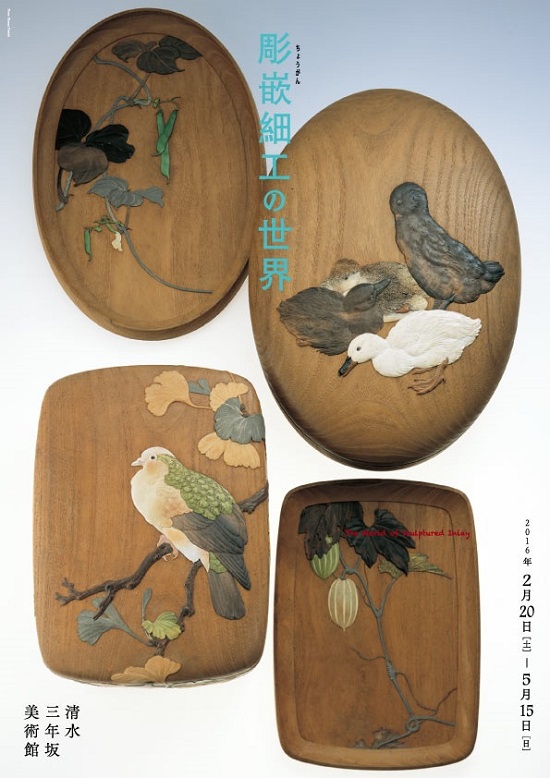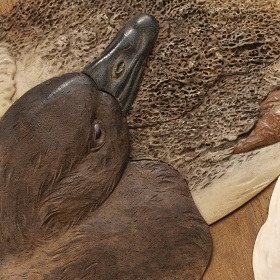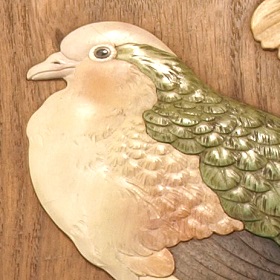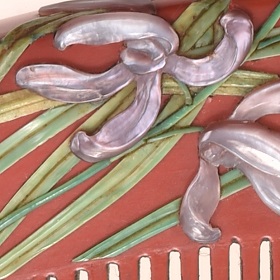
The World of Sculptured Inlay
Chogan is the technique of inlaying seashell, ivory, horn, tortoise-shell or metal engraved and chiseled along a pattern in a surface of wood or ivory. The oldest original chogan can be seen among the imperial treasures in Shosoin (the Nara era treasure house at Todaiji Temple). Originally created in China and transferred to Japan, the chogan technique was improved and gradually brought to great sophistication after reaching these shores, with superb art works being produced especially in the Meiji era and later.
The central chogan artists were Asahi Gyokuzan, Ishikawa Komei, Nohara Sadaaki and Tanaka Isshu, sculptors who flourished in Meiji and Taisho. Processing materials to make them suitable for various designs and then undertaking the inlay process requires an encyclopedic knowledge of the materials and enormous amounts of time, and the artwork that resulted was like nothing if not like Nihonga painting, giving expression to a uniquely Japanese painterly world.
This exhibit presents the refined implements and accessories produced for the Japanese aficionados of refined taste as well as superior works displayed at Meiji and Taisho era International Expositions. We hope that you enjoy the individual elegance and style as well as the beauty of the masterpieces of sculptured inlay to be found here.
 2025-12-07 / 2016-02-20
2025-12-07 / 2016-02-20 

